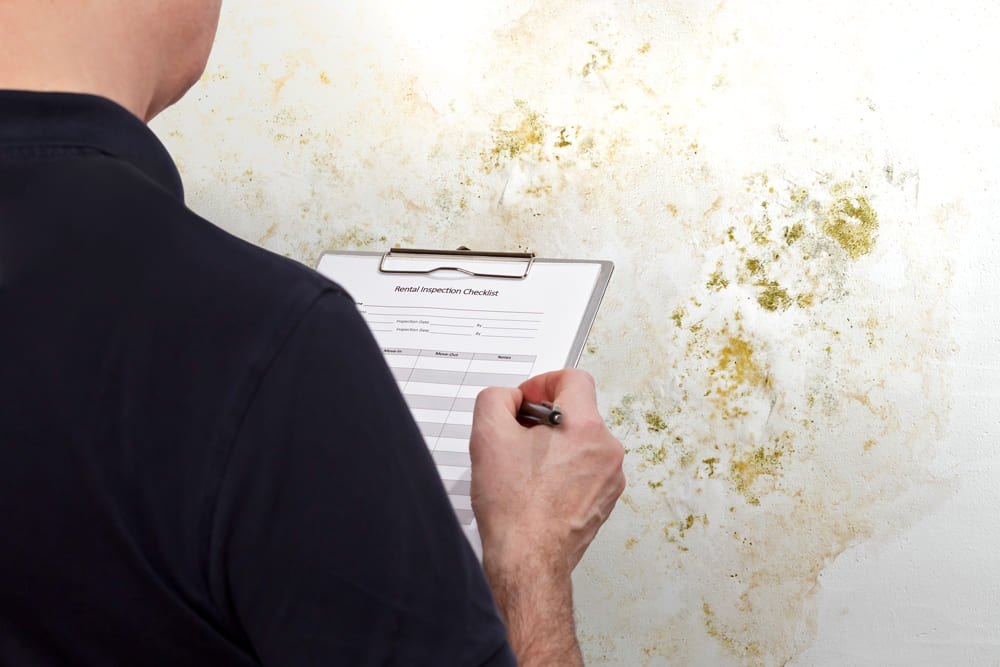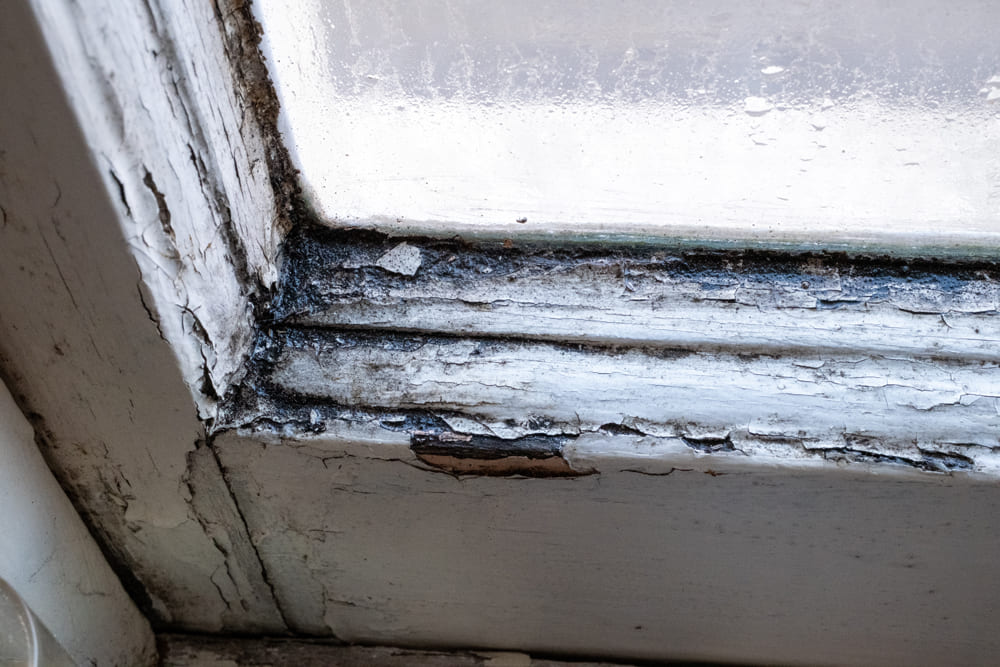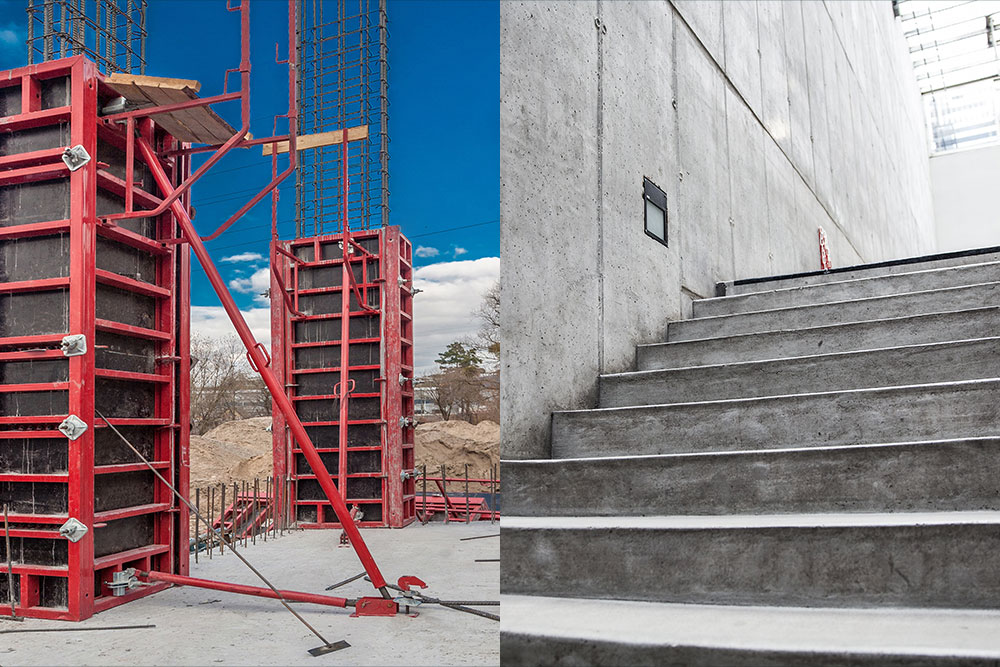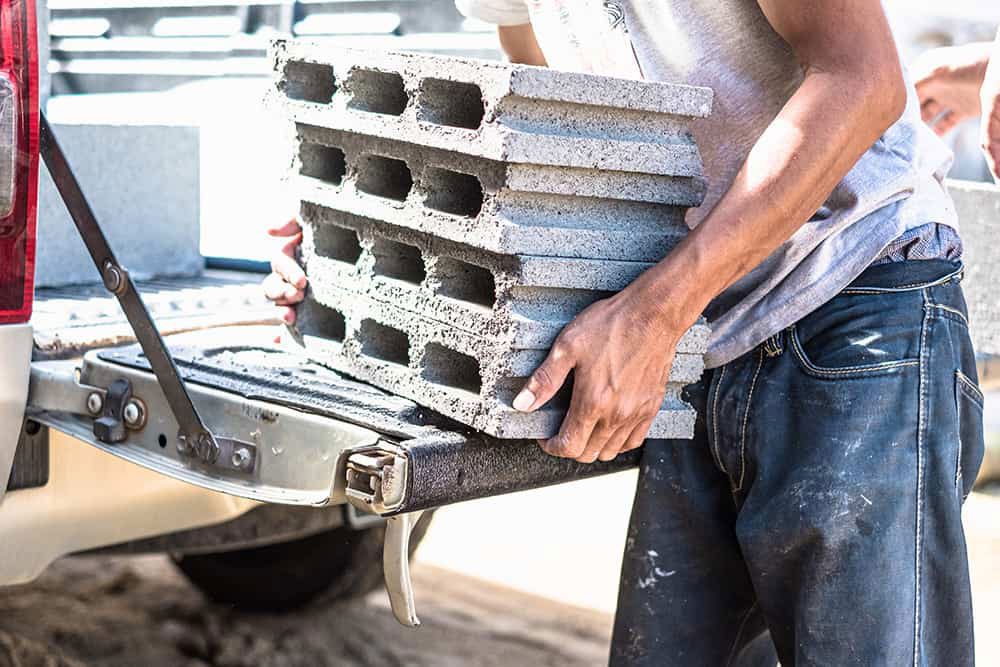
Landlords have a legal duty to address damp and mould in rental properties.
Mould is a recognised health hazard and prolonged exposure can be fatal, particularly for children. Currently, there’s no set time limit for fixing damp or mould issues. But that will change with the introduction of Awaab’s Law this year.
This guide explains both current laws and new rules for managing damp and mould in rental properties.
Key Takeaways
- Landlords have a legal duty to fix damp and mould issues in their properties.
- Landlords who ignore or deny reports of damp or mould risk fines, legal action and being banned from property letting.
- Exposure to mould can cause serious illness or even be fatal. Landlords who fail to prevent harm to their tenants can be held liable.
Understanding Damp and Mould
Damp is moisture that builds up in walls, ceilings or the air.
Mould forms when that moisture doesn’t go away. It spreads quickly and damages property.
In rentals, it’s a common problem, especially in properties with poor insulation, inadequate airflow or leaky water fixtures.
Damp and mould cases prove there’s something wrong with the property – maybe a leak, blocked vent or cold walls. Even if tenants’ behaviour makes it worse, you’re still responsible for dealing with the cause.
Causes of Damp and Mould
Damp and mould are caused by trapped moisture. This can happen when:
- Roofs leak, gutters overflow or pipes break
- Windows are sealed shut or vents are blocked
- Walls are cold and not insulated
Tenants can add to the problem by cooking, showering or drying clothes indoors without ventilation. But the key issue often lies with the property itself. If there’s a fault with the structure or design, or if repairs are needed, you must see them resolved.
You must also provide proper heating and ventilation. If that’s missing, tenants can’t manage damp on their own.
Construction Courses
Explore our range of online Construction Training courses. Designed to support compliance and safety during construction and in occupied buildings. Courses equip workers and duty holders with essential knowledge to work safely, efficiently and in line with industry standards.
Health Risks to Tenants
Exposure to mould can cause:
- Breathing problems and chest infections
- Skin and eye irritation
- Asthma attacks
These issues mainly affect the elderly, those with existing health conditions and children. In severe cases, exposure can prove fatal.
After living his entire short life in a mould-infested flat, two-year-old Awaab Ishak died in 2020. Awaab’s family first raised a concern in 2017. His case led to calls for urgent legal reform, which we’ll return to later.
Relevant Legislation and Your Legal Duties
As a landlord, you have a legal duty to keep rental properties safe, structurally sound and suitable for habitation. That includes addressing damp and mould. Both are recognised health hazards, and failing to act can result in serious consequences for tenants.
No single law sets out this duty in full. Instead, it’s spread across several overlapping Acts. The laws that apply may vary depending on the type of tenancy, the condition of the property and the severity of the risk.
Below is a breakdown of the key laws that apply to damp and mould in rental properties.
Defective Premises Act 1972
The Defective Premises Act establishes a duty of care for landlords to ensure their properties are safe to live in and maintained in a way that avoids harm to occupants.
Under this Act, you can be held legally liable if someone is injured or made ill because you didn’t maintain the property properly. This includes tenants, their visitors or anyone who has a legal right to be there.
Landlord and Tenant Act 1985
This Act requires landlords to repair the structure and exterior of the property. It also introduced the concept of “fitness for human habitation”.
If damp or mould is linked to a leaking roof, cracked render, poor drainage or a broken heating system, it’s your responsibility to fix the cause. Once you’re aware of the issue, repairs must be carried out within a reasonable timeframe.
Housing Act 2004
This Act sets the legal framework for housing conditions in England and Wales. It gives local authorities the power to assess rented homes and force repairs where conditions are unsafe.
The most relevant part for dealing with damp and mould is the Housing Health and Safety Rating System (HHSRS).
The HHSRS classifies damp and mould as Category 1 hazards (a serious and immediate risk to health). If these types of hazards are found in your property, you’re legally required to act.
Fail to do so, and councils can:
- Issue improvement notices
- Carry out repairs and bill you
- Stop you from letting the property
- Impose fines
Homes (Fitness for Human Habitations) Act 2018
This Act applies to most tenancies in England with terms of under seven years. It requires all properties to be fit for human habitation from the start of and throughout the tenancy.
You must:
- Fix serious issues such as persistent damp, water ingress or black mould
- Resolve poor ventilation, condensation problems or cold walls
- Act quickly when tenants raise concerns.
Under this Act, tenants who feel you’ve failed in your duties can take you directly to court. If the court agrees that the property is unfit, you can be ordered to make repairs and pay compensation.
Social Housing (Regulation) Act 2023 and Awaab’s Law
The Social Housing (Regulation) Act 2023 introduced wide-reaching reforms designed to improve the quality and safety of social housing. A key part of the Act is the introduction of Awaab’s Law.
Under Awaab’s Law, social landlords must meet strict timeframes when dealing with health and safety hazards, including damp and mould. These requirements are designed to prevent another tragedy like Awaab’s death.
The new duties include:
- Emergency hazards (e.g., severe damp or mould linked to health risks) must be investigated and resolved within 24 hours
- Other significant damp and mould issues must be investigated within 10 working days, with repairs started within 5 working days of investigation
- Tenants must be kept informed of progress and decisions throughout the process
These time-based duties apply to social housing providers from October 2025.
While Awaab’s Law currently applies only to social landlords, the government has indicated that it may be extended to the private rented sector in the future.
What You Must Do to Manage Damp and Mould in Rental Properties
The steps below are not set out in any single law, but they reflect best practice. Following them will help you meet your legal duties, avoid long-term damage to your property and protect your tenants’ health.
1. Inspect Regularly
Check your properties often, especially in areas where moisture builds up, like bathrooms, kitchens, windows, roofs and behind furniture.
Look for early signs:
- Condensation or water stains
- Flaking paint or musty smells
- Black or green mould patches
Make sure extractor fans work and vents are clear. Keep written and photographic records of what you find, and follow up after repairs to check that the issue has not returned.
If the source of damp is unclear, consider hiring a professional damp surveyor. They can confirm whether the problem is caused by poor ventilation, insulation, plumbing or structural damage. This assessment will help you identify the necessary repairs.

2. Make Repairs Quickly
Address any issues as soon as they’re identified or reported:
- Fix leaks, heating systems and extractor fans without delay
- Improve insulation and ventilation if cold spots or condensation are a problem
- Never cover up mould with paint (it might temporarily hide the symptoms, but won’t protect anyone)
- Use professional mould removal services for serious cases
Fixing problems early is always cheaper and safer than “saving” money on repairs now.
3. Communicate with Tenants
If tenants report damp or mould, respond promptly.
- Let them know what you plan to do and when
- Explain how they can help reduce moisture (e.g., using fans, opening windows, avoiding indoor clothes drying)
- Do not pass blame – you are responsible for resolving the issue, especially when it relates to the property or its systems
Clear communication builds trust and helps prevent complaints or legal action.
Learn More Now About Damp and Mould Management
If you’re a landlord, letting agent or housing officer, you have to understand your responsibilities around damp and mould, especially as laws are getting tougher.
Our online Damp and Mould Awareness Training course explains:
- The health risks of damp and mould
- Common causes and warning signs
- Your legal duties under current and upcoming legislation
- Best practices for inspection, communication and prevention
This short, awareness-level course is ideal for anyone looking to build a foundation in compliant damp and mould management.





















